Premier: B40 housing proposal underscores inclusivity in Kuching’s urban development

KUCHING (Nov 10): The Sarawak government plans to allocate a land in Kuching to be developed into affordable housing for the B40 (low-income) group. Premier Datuk Patinggi Tan Sri Abang Johari Tun Openg highlights this as underscoring the government’s commitment to integrating the B40 group into Kuching’s urban development. “We do not want those who are unable to afford houses to be pushed outside of Kuching, to live in distant areas. “Our policy is one of inclusivity; regardless of social status, all citizens should live together. “For the B40 group, the government must provide the necessary assistance for them to acquire houses,” he said during his speech for Sarawak Housing and Real Estate Developers Association (Sheda)’s Excellence Awards 2024, held at the Borneo Convention Centre Kuching (BCCK) on Saturday night. Adding on, Abang Johari emphasised the importance of providing affordable housing in the urban areas to the B40 group, which would allow them to enhance their livelihood. “If B40 families reside near quality educational institutions, it will offer a better future for their children. “By 2026, if their children are eligible for university education at Sarawak-owned universities, we will cover their university fees. “This initiative will elevate our fellow Sarawakians, equipping them with knowledge so they can pursue any career of their choice and improve their livelihoods,” he explained. On another subject, Abang Johari announced that the state government would allocate land for the construction of new Sheda headquarters. He added that the proposed headquarters building would be located alongside those other professional bodies such as the Institution of Engineers Malaysia (IEM), the Bumiputera Engineers Association, and the Board of Surveyors and Town Planners. “We have allocated land to these professional organisations, so the Sheda headquarters should ideally be in the same vicinity.” Abang Johari also said a cluster for professional organisations was being planned within the Kuching area, which would feature enhanced connectivity. “This area will include a new route extending from the rear of Unimas (Universiti Malaysia Sarawak) to Pending, eventually linking to the Sejingkat Bridge. The route is expected to be ready by late 2025 or 2026. “With this new route, the area will be effectively integrated into Kuching, with just a 20-minute drive to the city centre. “The Sheda headquarters will be located there,” he said.
RM321 mln Batang Rajang Bridge to be completed by March 2025

By DayakDaily Team SARIKEI, Nov 8: The RM321 million Batang Rajang Bridge is expected to be fully completed by March next year, two months ahead of schedule. Deputy Premier of Sarawak, Datuk Amar Douglas Uggah Embas, who is also the Minister of Infrastructure and Port Development (MIPD), expressed his satisfaction with the project’s progress during a stitching ceremony for the bridge at the site today. “This project marks a milestone that will drive regional connectivity,” he said as quoted by Sarawak Public Works Department (JKR) in a Facebook post today. The bridge is expected to reduce dependence on the existing Sibu-Tanjung Manis Road and provide a shorter route between these areas. The bridge’s completion will see a reduction in the journey between Sarikei and Tanjung Manis from 122 kilometres (km) to 53km with travel time cut short from 2 hours and 30 minutes to 45 minutes. Meanwhile, for the journey from Bintangor to Tanjung Manis, the travel distance will be reduced from 108km to 60km, cutting down the travel time from two hours to one hour only. Also present were Deputy Minister for Urban Planning, Land Administration and Environment Datuk Len Talif Salleh, who is also Kuala Rajang assemblyman; MIPD permanent secretary Datu Chew Chee Yaw; Pakan assemblyman Tan Sri William Mawan Ikom; Meluan assemblyman Rolland Duat Jubin; Sarikei Resident Datu Michael Ronnie Langgong and Sarawak JKR acting director Wisil Lichok. DayakDaily
Sarawak plans to open trade and tourism office in Abu Dhabi
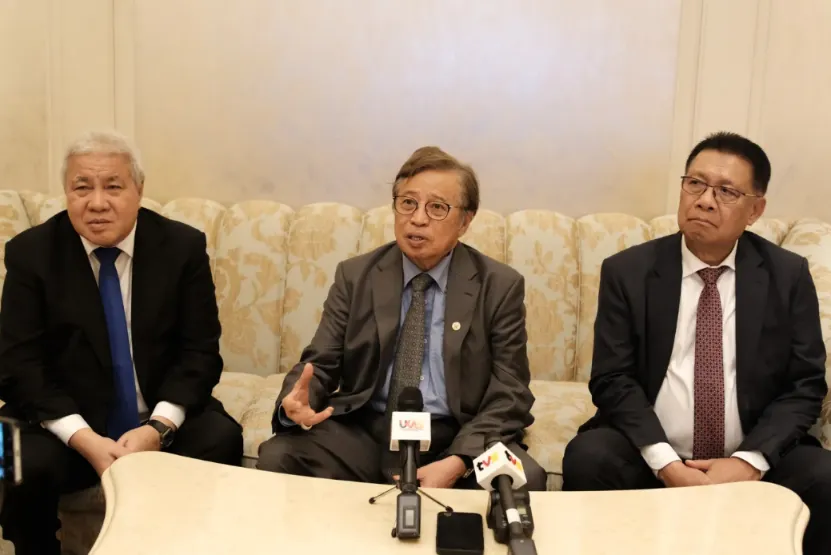
By DayakDaily Team ABU DHABI, Nov 6: The Sarawak government is planning to open a Sarawak Trade and Tourism Office in Abu Dhabi, United Arab Emirates (UAE) as part of its efforts to strengthen strategic cooperation with the country. According to a report by Sarawak Public Communications Unit (Ukas), Sarawak Premier Datuk Patinggi Tan Sri Abang Johari Tun Openg said that a suitable location for the office in Abu Dhabi is still being identified. If the plan materialises, he said the office will be managed by Petroleum Sarawak Berhad (Petros) and Sarawak Energy Berhad (Sarawak Energy). “The office placement plan also aims to enhance cooperation with countries in the Middle East and other ASEAN regions, as well as share technology with Abu Dhabi. “Abu Dhabi already has a data centre powered by renewable energy through solar, and they have partnerships with investors. “If we find compatibility between the Middle East and us, there is potential at the ASEAN level to foster close cooperation between the Middle East and Asia,” he said during a press conference following his visit to Masdar City, Abu Dhabi, on Tuesday (Nov 5) as part of his working visit to the UAE. Also present were Sarawak Deputy Premier Datuk Amar Awang Tengah Ali Hasan, Minister of Utility and Telecommunication (MUT) Dato Sri Julaihi Narawi, Sarawak Secretary Datuk Amar Mohamad Abu Bakar Marzuki, Deputy Minister of Energy and Environmental Sustainability (MEESty) Datuk Dr Hazland Abang Hipni, Deputy Minister of Urban Planning, Land Administration and Environment Datuk Len Talif Salleh, and Sarawak Energy Group Chief Executive Officer (CEO) Datuk Sharbini Suhaili. Additionally, the Sarawak Premier noted that the Sarawak office in Abu Dhabi would function similarly to the Sarawak Trade and Tourism Office Singapore (STATOS), the Sarawak Trade and Tourism Office Brunei (STATOB), and the Sarawak Trade and Tourism Office Kalimantan. – DayakDaily
Sarawak’s Kuching city to emulate UAE’s Masdar City as development model

By DayakDaily Team ABU DHABI, Nov 6: The advancements of Masdar City in Abu Dhabi will serve as a model for the future development of Kuching, particularly in new areas. According to a report by Sarawak Public Communications Unit (Ukas), Sarawak Premier Datuk Patinggi Tan Sri Abang Johari Tun Openg emphasised the importance of adopting the carbon-free city as a model for sustainable development, featuring cutting-edge technology. “We see the potential to learn from the sustainability practices of this city and use it as a model for the development we aim to implement in Kuching, especially in new areas. “I believe we can adopt what has been successfully executed in Masdar City. We will discuss this further and perhaps explore collaboration with Abu Dhabi,” he said during a visit to Masdar City in Abu Dhabi on Tuesday (Nov 5), as part of an official working visit to the United Arab Emirates (UAE). Joining him were Sarawak Deputy Premier Datuk Amar Awang Tengah Ali Hasan, Minister of Utility and Telecommunication (MUT) Dato Sri Julaihi Narawi, Sarawak Secretary Datuk Amar Mohamad Abu Bakar Marzuki, Deputy Minister of Energy and Environmental Sustainability (MEESty) Datuk Dr Hazland Abang Hipni, and Sarawak Energy Berhad (Sarawak Energy) chairman Datuk Ibrahim Baki. During the visit, the delegation observed the use of new technology powered by solar energy, featuring low-carbon initiatives and a balance in environmental conservation. “They utilise solar energy, and the city’s infrastructure is built around sustainable and eco- friendly practices. “I noticed that the development here prioritises high standards of environmental conservation, focusing on low carbon emissions and incorporating advanced educational, commercial, and administrative facilities,” he stated. He further said that the sustainable city model developed by Abu Dhabi could transform Sarawak’s development landscape toward greater sustainability. At the same time, he envisioned potential cooperation between Sarawak and Abu Dhabi in exploring new economic opportunities. During the visit, Abang Johari and his delegation had the opportunity to ride the Personal Rapid Transit (PRT), a driverless electric autonomous vehicle. They also received a briefing from Suwaid Al Badi, Head of Procurement and Contracts at Masdar City, on the city’s development. Also present were Petroleum Sarawak Berhad (Petros) chairman Tan Sri Datuk Amar Hamid Bugo, Sarawak Economic Development Corporation (SEDC) chairman Tan Sri Datuk Amar Abdul Aziz Husain, Sarawak Energy Group Chief Executive Officer (CEO) Datuk Sharbini Suhaili, and other senior Sarawak government officials. DayakDaily
No more ‘quota system’ for admission to Sarawak state-owned universities

SIBU – Admission into five state-owned universities in Sarawak will be based solely on meritocracy to pick the best of the best, said Dr Annuar Rapaee, the Malaysian state’s Deputy Minister of Education, Innovation and Talent Development. “Students need to know that enrolment for these universities is no longer based on a quota system. In other words, it’s based on meritocracy,” said Dr Annuar at the Sarawak Career and Training Fair 2024 on Nov 2. He said that with a system of meritocracy, students have to compete for places. “Students must realise the importance of competition in order to pursue their studies in university,” he added. The five universities are Swinburne University of Technology Sarawak Campus, Curtin University Malaysia, University of Technology Sarawak, i-CATS University College, and Centre for Technology Excellence Sarawak. According to Dr Annuar, for Sarawak to advance towards becoming a developed state, meritocracy is the “only way to train talents and pick the best of the best among our students”. To ensure that rural students can gain admission to these universities, he said the Sarawak government is upgrading their facilities, which includes spending RM15 million (S$4.5 million) yearly to provide free tuition for Secondary 3 and 5 students. THE STAR/ASIA NEWS NETWORK
New requirements for Sarawak – Malaysia My Second Home (S- MM2H) in 2025
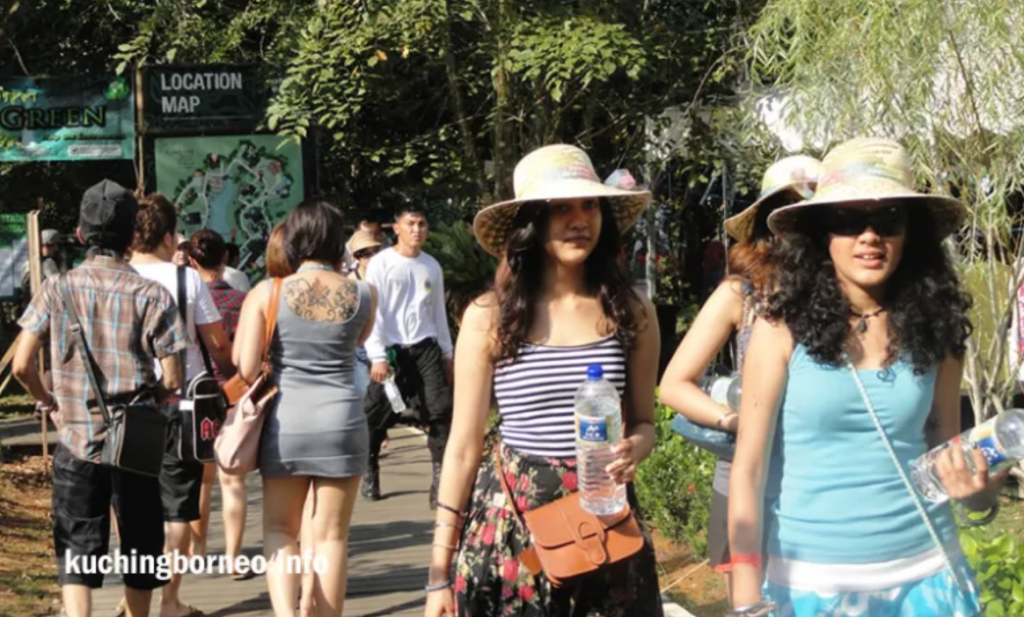
The Sarawak government has announced new requirements for the Sarawak – Malaysia My Second Home (S-MM2H) for 2025. The new requirements will take effect on January 1st, 2025. FreeMalaysia Today (FMT) reported Sarawak tourism, creative industry and performing arts minister Abdul Karim Rahman Hamzah as saying that the new requirements include requiring the applicant to be at least 30 years of age, and being from a country which has diplomatic relations with Malaysia. Other terms include having a fixed deposit account of RM500,000 with any local bank in Sarawak.If approved, the pass holder must also stay in Sarawak for a minimum of 30 days a year with the pass valid for 5 years before it can be renewed for another five. Karim was also quoted as saying that most of the approved applications for The Sarawak government has announced new requirements for the S-MM2H are from China, United Kingdom, Taiwan, Hong Kong and United States. More details about Sarawak – Malaysia My Second Home (S-MM2H)Checks on the official site for the program note the following terms and conditions as of 16 July 2024, for those keen to make Sarawak their second home. What is S-MM2HSarawak – Malaysia My Second Home (S-MM2H) is a ten year pass allowing non-Malaysians to stay in Sarawak. Pass holders will be given a maximum 5-year pass and need to renew it to claim another 5-year pass. The S-MM2H pass is different from the Malaysia My Second Home (MM2H) pass in terms of terms and conditions. Who can apply and basic terms of S-MM2HS-MM2H is open to those who are 50 years old and above with no limit of age set for the applicants spouses (if any). Unmarried children below the age of 21 are also allowed under their respective dependent. Those in this category need to show proof they have a fixed deposit of at least RM150K in a local Sarawak bank and a pension letter/employment confirmation with at least RM7K a month. For those without a pension letter or employment confirmation, they will need to have a bank statement that shows they have savings fund of at least RM50K. Those who are within 30-49 years old can also apply for Sarawak-Malaysia My Second Home (S-MM2H) by having at least RM150K in any local bank in Sarawak and a certified pension letter with pension funds of RM7K or monthly offshore income funds of at least RM7K. How do you apply for Sarawak – Malaysia My Second Home (S- MM2H)There are two ways to apply for the Sarawak-Malaysia My Second Home (S-MM2H) namely by direct submission, or via assisted submission. There is no online application. Direct submission means you hand in all the needed application documents to the One-Stop Center of the Ministry of tourism, creative industry and performing arts (MTCP) at Bangunan Baitulmakmur II, Petrajaya Sarawak. Direct submission means applications must be bonded by a sponsor who originated from and is currently staying in Sarawak, with the sponsor only sponsor one application at a time. Assisted Submissions on the other hand involve third parties or Legal Agent for S-MM2H which will help the application as they are the only ones allowed to submit S-MM2H applications. List of Legal Agents for S-MM2H can be seen HERE. The application process will take 90 working days and can be longer if more background checks is required. Official details on S-MM2HFor more details or updated information on the S-MM2H program, you can visit the websites below.Sarawak Tourism
Premier: Sarawak laying groundwork for future financial success aligned with environmental stewardship
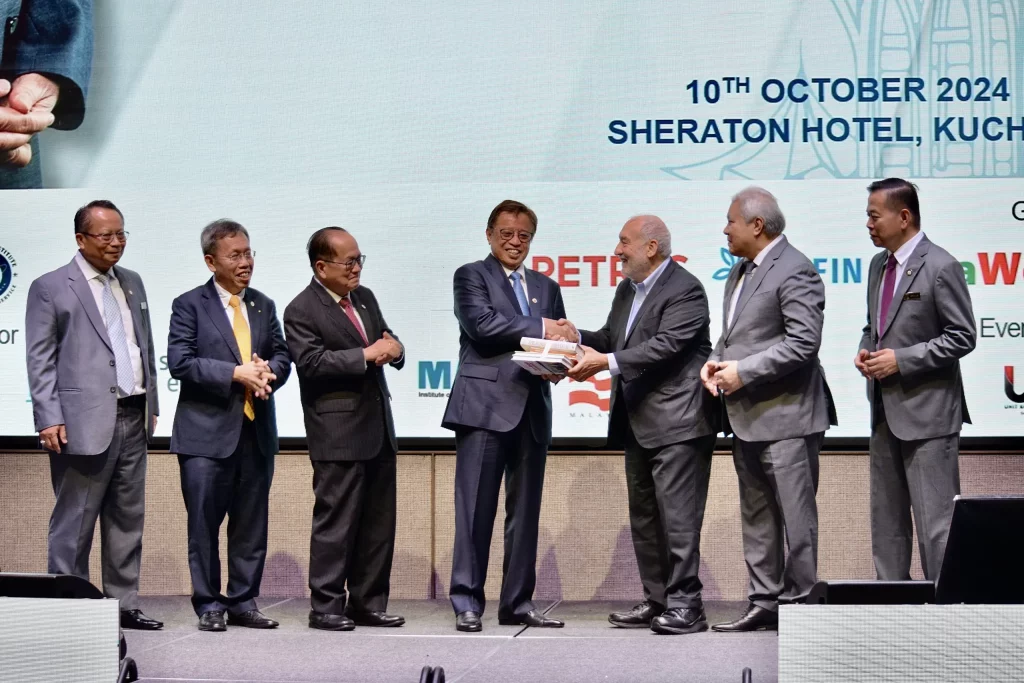
KUCHING (Oct 10): Sarawak is transitioning towards a green economy that prioritises sustainable development while minimising environmental degradation, said Datuk Patinggi Tan Sri Abang Johari Tun Openg. The Premier said this shift focuses on decoupling economic growth from carbon emissions and resource depletion, ensuring long-term economic and ecological resilience. “Sarawak is laying the groundwork for a future where financial success is aligned with environmental stewardship by integrating renewable energy sources such as hydropower, solar, and biomass,” he said in his keynote address at the Sarawak Future Forum here today. Noting that while Sarawak was historically reliant on oil, gas, and timber, Abang Johari said the state’s economy is now diversifying in response to the global shift towards low-carbon economies. “Recognising the finite nature of these traditional resources, the state is pivoting toward renewable energy, digital innovation, and human capital development. “The Post Covid-19 Development Strategy (PCDS) 2030 serves as a roadmap for this transformation, embedding environmental sustainability as a fundamental component of economic progress,” he said. He pointed out that a cornerstone of Sarawak’s economic transformation is its commitment to renewable energy. “With substantial hydropower capacity, the state already leads the region in clean energy production. “However, Sarawak is expanding its renewable portfolio, targeting an impressive 15GW capacity by 2035. This strategic expansion positions Sarawak as a regional powerhouse in green energy, capable of exporting sustainable power to neighbouring countries, including Singapore, Indonesia, and beyond,” he said. He also said that green hydrogen is at the forefront of Sarawak’s clean energy strategy where the state aims to become a key exporter of hydrogen, particularly to South Korea and Japan, aligning with their national net-zero strategies. “Furthermore, Sarawak is developing a robust hydrogen transportation and storage infrastructure, allowing for seamless export to international markets. “By leveraging its geographical advantage and proximity to key Asian economies, Sarawak can become a major supplier of clean hydrogen, further diversifying its economy,” he said. On Sarawak’s digital transformation, Abang Johari said this extends to urban development, where the region invests in smart city initiatives to optimise city management and improve residents’ quality of life. “Artificial Intelligence (AI) and the Internet of Things (IoT) are being integrated into infrastructure systems to enhance efficiency in areas such as traffic management, energy distribution, and public services. “These smart city initiatives are not just about improving urban living—they are also aligned with Sarawak’s broader climate goals. “By making cities more efficient and sustainable, Sarawak is reducing its environmental footprint while enhancing the liveability of its urban areas,” he said. The Premier said the principle of inclusivity also lies at the heart of the Sarawak government’s development strategy. “Social equity must be a guiding principle as we develop policies and programmes that ensure every Sarawakian, regardless of background, has access to opportunities for education, employment, and entrepreneurship. “To truly measure our success, we must ask ourselves, ‘Are we creating a society where everyone has a chance to succeed? Are we building a future where no one is left behind?’ These are the questions that must guide our work in the years ahead,” he said. On the forum, Abang Johari said the inaugural event has brought together global experts, thought leaders, and practitioners from diverse fields, including Nobel laureate Prof Joseph Stiglitz, a global leader in economic thought who has long championed the need to move beyond gross domestic product as a measure of success. “It is our hope that through these discussions, we will gain new perspectives and insights on how to create a more just and sustainable economy. “Sarawak is ready to learn, to adapt, and to lead in areas that matter most to the future of our planet – whether it be green energy, renewable energy, sustainable agriculture, or digital innovation,” he said. The Sarawak Future Forum is organised by the Sarawak Centre of Performance Excellence (Scope) and Leadership Institute of Sarawak Civil Service (LISCS), in partnership with The New York Times, Institute of Management Sarawak (Masa), and the American-Malaysian Chamber of Commerce (AMCHAM). Among those present were Deputy Premiers Datuk Amar Douglas Uggah Embas, Datuk Amar Awang Tengah Ali Hasan, and Datuk Amar Dr Sim Kui Hian; State Secretary Datuk Amar Mohamad Abu Bakar Marzuki; and Deputy State Secretary (Economic Planning and Development) Datu Dr Muhammad Abdullah Zaidel.
Global Telecommunications first off-taker for Kuching’s FutureData Park
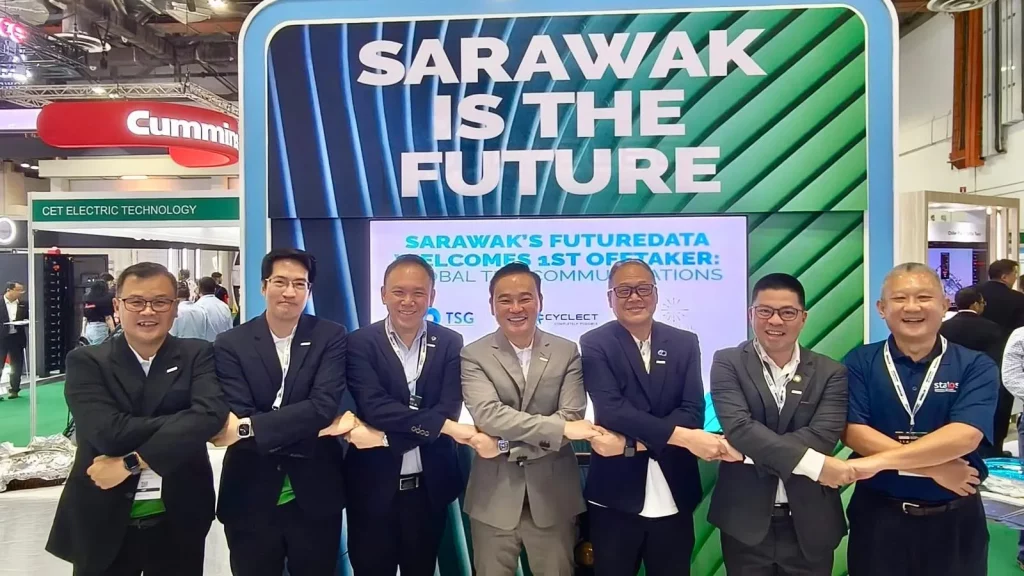
KUCHING (Oct 10): Global Telecommunications is set to be the first off-taker to set up its data centre within FutureData Park here. FutureData Consortium, led by TSG Group of Sarawak and Cyclect of Singapore, announced this during a ceremony at its booth in DC World, Singapore yesterday. The 500MW site for the data centre was first announced in June 2023 at Shape the World Summit here witnessed by Premier Datuk Patinggi Tan Sri Abang Johari Tun Openg. TSG Group said in a press statement today that the high-density data centre will be designed to support next-generation digital infrastructure. It will be purpose-built to cater to cutting-edge applications such as Large Language Model (LLM) training and GPU as a Service (GaaS), making it a vital hub for artificial intelligence (AI) development and cloud computing services. Additionally, the data centre shall provide edge computing solutions along with Internet Data Exchange (IDE) services, enhancing data handling and processing at the edge of networks for faster and more efficient performance. Costing above US$130 million (RM617.84 million), the centre will operate on a robust 17MW power supply, offering significant energy capacity to power the demanding workloads of modern computing systems. It will be designed to support over 1,000 racks, with selective high-density racks delivering up to 125KW of power, providing the scalability required for high-performance computing environments. Construction will begin in the second quarter of 2025 and it is expected to be online by 2026. Through this project, the company aims to position itself as a key player in the region’s digital economy by delivering the infrastructure needed to support emerging technologies, cloud services, and AI-driven innovations. The facility’s strategic location and advanced design make it a cornerstone for data exchange, connectivity, and AI infrastructure development in East Malaysia. “As the pioneer developer heeding the call of the state government to develop large-scale data centre parks in Sarawak, in line with the Sarawak Digital Economy Blueprint 2030, TSG Group is proud to partner with Global Telecommunications Group to set up the first AI DC in Sarawak for our FutureData project,” said TSG chief executive officer Datuk Chris Chung. Global Telecommunications chairman Stanley Ling said with existing data centres in Peninsular Malaysia, having this next AI DC in Sarawak means the company now has a pan-Malaysian network of data centres. “We are excited about the vast potential growth in Sarawak, Sabah, and the rise of Kalimantan. The future is indeed Sarawak,” he said. Cyclect chief executive officer Melvin Tan said the company is proud and excited to be part of this pioneering project in Kuching, which marks a major milestone for AI-driven infrastructure in Borneo. “FutureData Park will set new standards in sustainability and digital innovation, providing the foundation for industries to leverage the power of AI and next-gen computing,” he said. TSG Group is a diversified group in Sarawak with transformative businesses in infrastructure and rural development, property development, oil palm plantation, Paulownia tree plantation for environmental sustainability, and future economy projects focusing on food, environment, data, and space exploration. In Singapore, TSG group’s interests are represented by its investment company DesignFutures Venture Pte Ltd. Among those present during the announcement were Sarawak Trade and Tourism Office Singapore (Statos) CEO Chew Chang Guan, Dylan Yee (TSG Group), Lawrence Chong (FutureData), Sylvester Wong (Global Telecommunications), and Kenny Lau (Statos).
Work on Tegas digital core living nomad lodge in Samajaya Industrial Park to commence in 2025, says chairman
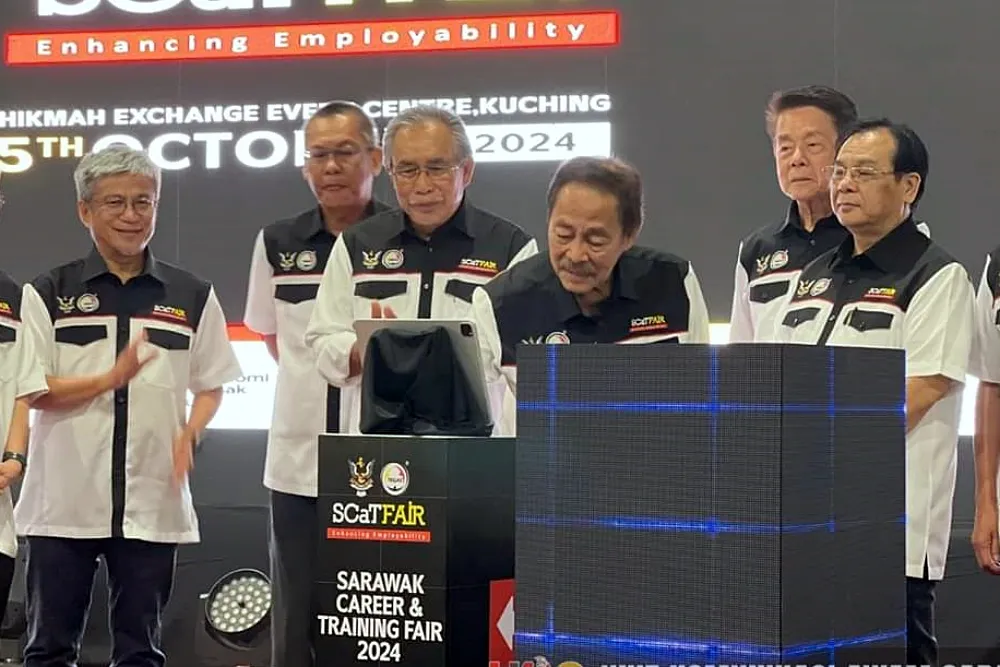
KUCHING (Oct 5): The construction of the Tabung Ekonomi Gagasan Anak Sarawak (Tegas) digital core living nomad lodge at the Samajaya Industrial Park here will commence next year, said Tegas chairman Datuk Len Talif Salleh. The Natural Resources and Urban Development deputy minister said the government is spending RM71 million for the construction of the building and facilities, for the use of researchers and students conducting research at the Tegas Digital Village. “Preliminary planning has already been carried out and all related documentation requirements have been submitted to the State Planning Authority for approval,” he said when met at the launch of the Sarawak Career and Training Fair (SCaT Fair) here today. The event was officiated by Education, Innovation and Talent Development Minister Dato Sri Roland Sagah Wee Inn who represented Premier Datuk Patinggi Tan Sri Abang Johari Tun Openg. For the record, the establishment of the Tegas Digital Core Living Nomad Lodge was announced by Abang Johari when officiating at the 2023 SCaT Fair.
Lee: S’wak drawing up master plan on integrated, modern transport system
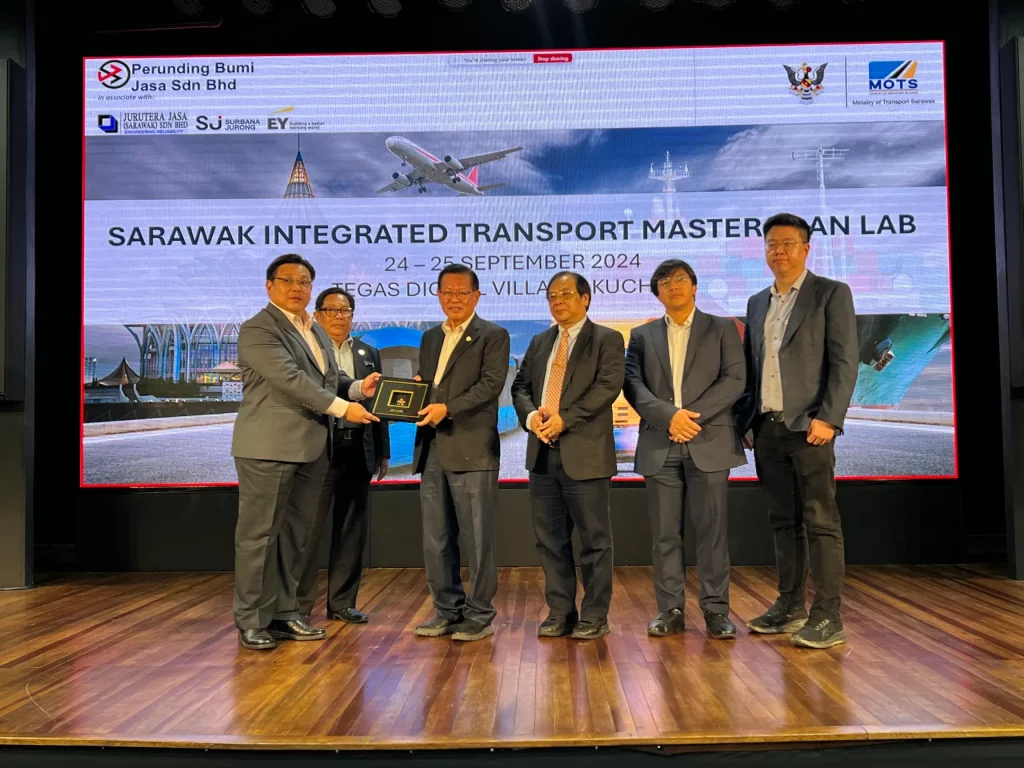
KUCHING (Sept 24): The Sarawak Integrated Transport Master Plan 2025-2040 aims to create a comprehensive framework to develop an integrated and modern transport system that meets the evolving needs of Sarawak, said Dato Sri Lee Kim Shin. The Transport Minister said while there have been various city master plans and regional development plans in the past that touched on the aspects of transport, none have fully consolidated or addressed the complexity and opportunities within the sector. “This Master Plan aims to address that gap and chart a unified and strategic way forward,” he said when officiating a lab session for the master plan here today. He said the transport sector serves as the backbone of Sarawak’s economy and social inclusivity, where it plays a pivotal role in supporting key industries such as manufacturing, agriculture, tourism and services. He pointed out that his ministry has embarked on a transformative transport development including initiatives to modernise the public transport system under the Kuching Urban Transport System (KUTS) as well as enhancing air connectivity through the establishment of a Sarawak-owned airline and plans for a new international airport, which can unlock Sarawak’s potential as a strategic air travel hub and serve as a gateway for greater economic and tourism growth. “In the maritime and riverine sector, Sarawak is blessed with an extensive network of rivers which presents opportunities for trade, tourism and industrial growth including the oil and gas industry. “The Sarawak Transport Ministry is committed to leveraging these resources in an environmentally sustainable manner,” he said. He also said that the logistics sector had also been discussed, with a focus on developing lorry terminals to streamline supply chains across land, river, and air transport. “We are not only looking at developing transport in Sarawak only; we are working towards sub-regional connectivity with our neighbouring countries, Brunei Darussalam and Indonesia as well as regionally to promote sustainable economic growth, cross-border trade and tourism. “As we progress with the development of the transport modes – land, river, sea and air – we need to embrace digitalisation to improve efficiency, enhance integration and meet sustainability goals such as the use of green fuels and energy,” he said. Lee urged the lab participants, which comprised representatives from 56 government agencies and the private sector, to actively engage themselves throughout the session, which will also explore legal frameworks necessary for implementing the initiatives. “Your insights are of utmost importance in crafting a practical Master Plan,” he said. He also extended his appreciation to the study’s consultant consortium companies comprising Perunding Bumi Jasa, Surbana Jurong, Ernst and Young, Jurutera Jasa and Reddit & Co, for taking up this important task in the development of the Master Plan. “Your expertise and dedication will help ensure that the plan is comprehensive, sustainable, forward-looking and practical to provide a blueprint that can be effectively implemented,” he said. Also present were Deputy Minister of Transport (Aviation and Road) Datuk Dr Jerip Susil, Perunding Bumi Jasa Sdn Bhd director Wan Alwi, Surbana Jurong director Dennis Tan and Jurutera Jasa director Felix Ang.

